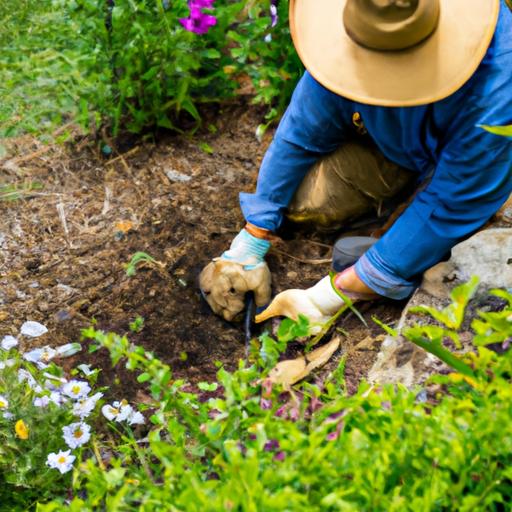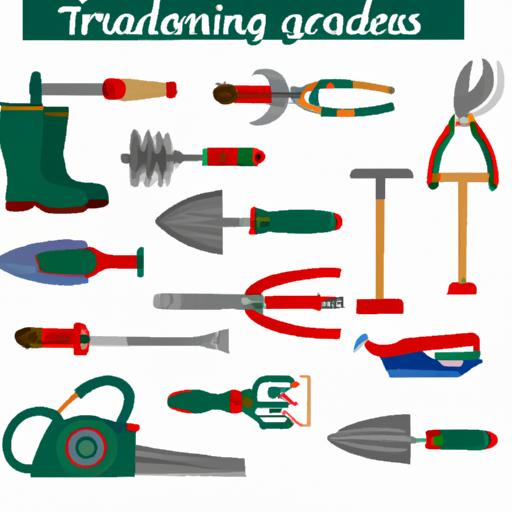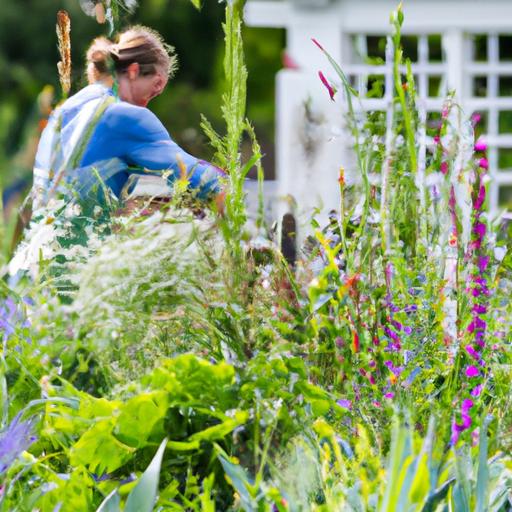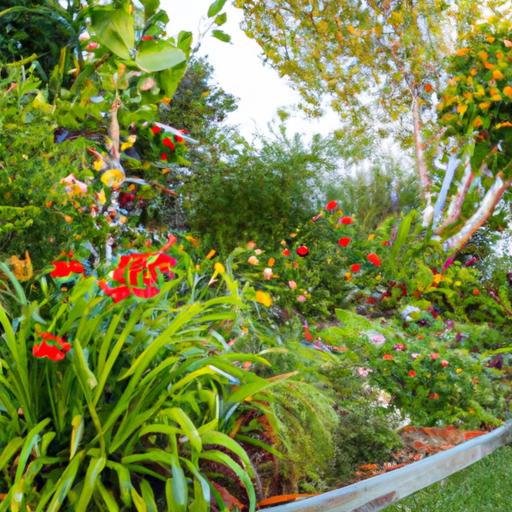Is Gardening Lime Safe for Dogs?
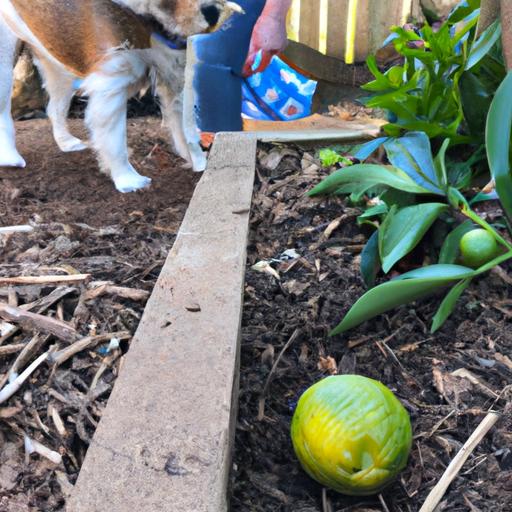
Introduction
Are you an avid gardener and also a proud dog owner? If so, you probably understand the importance of creating a safe environment for your furry friend. Gardening lime is a popular additive used by many gardeners to enhance soil quality and promote healthy plant growth. However, as a responsible pet owner, it’s crucial to consider the safety of gardening lime for your beloved canine companion.
Ensuring the well-being of our pets is a top priority, and this includes being aware of potential hazards that may lurk within our gardens. In this article, I will shed light on whether gardening lime is safe for dogs, providing you with the necessary insights to make informed decisions about your gardening practices. Let’s dive in!
Importance of Ensuring a Safe Environment for Pets
Our dogs are not just pets; they are cherished members of our families. As responsible pet owners, it is our duty to create a safe and nurturing environment for them. While we may take precautions indoors, it’s equally vital to consider the potential dangers that may exist in our outdoor spaces, such as our gardens.
A well-maintained garden can offer a plethora of benefits for both humans and pets alike. It serves as a sanctuary for relaxation, exercise, and exploration. However, certain elements within our gardens, including gardening lime, can pose risks to our furry companions. Therefore, it is crucial to address any concerns and ensure that our gardening practices align with the safety of our canine friends.
In the following sections, we will delve deeper into the world of gardening lime, exploring its composition, potential risks for dogs, and necessary safety measures to create a harmonious garden environment. Stay tuned for valuable insights that will enable you to strike the perfect balance between your love for gardening and the well-being of your four-legged friend.
Understanding Gardening Lime
Definition and Purpose of Gardening Lime
Gardening lime, also known as agricultural lime or garden lime, is a soil amendment that is primarily composed of calcium carbonate. Its main purpose is to raise the pH level of acidic soils, making them more alkaline. This is important because different plants thrive in different soil pH levels, and maintaining the right balance is essential for optimal growth.
Different Types of Gardening Lime
There are two common types of gardening lime: calcitic lime and dolomitic lime. Calcitic lime is derived from limestone and contains primarily calcium carbonate. On the other hand, dolomitic lime is derived from dolomite and contains both calcium carbonate and magnesium carbonate.
The choice between these two types depends on the specific needs of your garden. If your soil lacks magnesium, dolomitic lime can be a suitable option. However, if your soil already has sufficient magnesium levels, calcitic lime may be preferred.
Common Uses of Gardening Lime in Gardening
Gardening lime has a range of uses in gardening practices. One of the main purposes is to neutralize acidic soils, which can be detrimental to plant health. By raising the pH level, gardening lime helps to create a more balanced and fertile soil environment.
Additionally, gardening lime promotes the availability of essential nutrients in the soil, making them more accessible to plants. This can enhance overall plant growth and vigor. It also aids in breaking down organic matter, improving soil structure, and increasing water penetration.
Furthermore, gardening lime can be used to deter certain pests and diseases that thrive in acidic environments. By creating a less hospitable environment for these harmful organisms, gardening lime can contribute to the overall health and vitality of your garden.
In the next section, we will explore the potential risks associated with gardening lime ingestion for dogs. Stay tuned to ensure the safety of your furry friend in your gardening endeavors.
Potential Risks of Gardening Lime for Dogs
Gardening lime, though beneficial for plants, can potentially pose risks to our furry companions. Understanding its chemical composition and potential hazards is crucial in ensuring the safety of our dogs in the garden.
Chemical Composition and Potential Hazards
Gardening lime primarily consists of calcium carbonate, which is used to neutralize acidic soil and improve its pH balance. While this compound is generally safe for plants, its ingestion by dogs can lead to health complications. Calcium carbonate, when ingested in large amounts, can cause gastrointestinal distress and imbalances in the body’s electrolyte levels.
Effects of Gardening Lime Ingestion on Dogs
When dogs accidentally ingest gardening lime, it can lead to various adverse effects on their health. The alkaline nature of lime can cause irritation and inflammation in the digestive tract, resulting in symptoms such as vomiting, diarrhea, and abdominal pain. Additionally, excessive lime consumption can disrupt the acid-base balance in the body, potentially leading to metabolic disturbances.
Symptoms of Gardening Lime Poisoning in Dogs
It’s important to be vigilant and recognize the signs of gardening lime poisoning in dogs. If your dog has ingested lime, watch out for symptoms such as excessive drooling, difficulty swallowing, loss of appetite, lethargy, and dehydration. In severe cases, lime poisoning can manifest as tremors, seizures, and even organ damage.
As a responsible pet owner, it’s crucial to be aware of these potential risks associated with gardening lime. By understanding the chemical composition, effects of ingestion, and symptoms of lime poisoning in dogs, you can take proactive measures to prevent any harm to your furry friend. In the next section, we will discuss the safety measures and precautions that can be implemented to minimize the risks posed by gardening lime in your garden.
Safety Measures and Precautions
Gardening lime may present potential risks to our furry friends, but with the right safety measures and precautions, we can create a safe environment for both our gardens and our dogs. Here are some essential guidelines to follow:
A. Importance of Reading Product Labels and Instructions
Before using any gardening lime product, it is crucial to carefully read and understand the labels and instructions provided by the manufacturer. These labels often contain valuable information regarding proper usage, dosage, and potential hazards associated with the product. By familiarizing yourself with these guidelines, you can ensure that you are using the gardening lime in a manner that minimizes risks to your pets.
B. Safe Handling and Storage Practices for Gardening Lime
Proper handling and storage of gardening lime are essential to prevent accidental exposure and ingestion by dogs. Here are a few key practices to keep in mind:
-
Wear protective gear: When handling gardening lime, it is advisable to wear gloves, a mask, and protective eyewear. This will help safeguard against any potential skin, respiratory, or eye irritation.
-
Store securely: Store gardening lime in a secure location that is out of reach of your pets. Ensure that containers are tightly sealed to prevent accidental spillage or ingestion.
-
Clean up spills immediately: In the event of a spill, promptly clean up the area and dispose of any contaminated soil or materials. This will help prevent accidental ingestion by dogs during their outdoor adventures.
C. Protective Measures to Minimize Exposure for Dogs
While implementing safety measures during the handling and storage of gardening lime is crucial, it is equally important to take protective measures when your dog is in the garden. Here are a few recommendations:
-
Supervise outdoor activities: Keep a close eye on your dog when they are in the garden to ensure they do not come into direct contact with gardening lime or other potentially harmful substances.
-
Create barriers: Consider creating physical barriers or designated areas within your garden where your dog can roam freely without the risk of encountering gardening lime. This can be achieved through fencing or strategically placed planters.
-
Regularly wash paws: After your dog has been in the garden, make it a habit to wash their paws thoroughly to remove any potential residue or traces of gardening lime.
By adhering to these safety measures and precautions, you can enjoy gardening while also prioritizing the well-being and safety of your furry companion. Keep in mind that these guidelines are general recommendations, and it is always advisable to consult with your veterinarian for personalized advice based on your dog’s specific needs and health condition.
Alternatives to Gardening Lime
Gardening lime may not be the best option for your garden if you’re concerned about the safety of your furry friend. Luckily, there are several pet-friendly alternatives and natural methods that can help you achieve healthy soil without the use of lime. Let’s explore some of these alternatives and expert tips to maintain a dog-friendly garden environment.
Pet-Friendly Lime Alternatives for Gardening
If you’re looking for alternatives to gardening lime that are safe for dogs, consider using crushed eggshells or oyster shells. These natural sources of calcium can help balance the soil pH and provide essential nutrients for your plants. Crush the shells into small pieces and sprinkle them around your garden beds to reap the benefits.
Another great option is to use dolomite lime, which contains both calcium and magnesium. This can be a suitable substitute for traditional gardening lime while maintaining soil health and plant growth. However, be sure to follow the recommended application rates and consult with a gardening expert if needed.
Natural Methods to Enhance Soil without Using Lime
Did you know that there are natural methods to enhance soil fertility and balance pH levels without relying on lime? One such method is the use of compost. Composting kitchen scraps, yard waste, and other organic materials can provide a rich source of nutrients for your plants while improving soil structure. Incorporate compost into your garden beds to create a nutrient-rich environment that promotes plant growth.
Additionally, consider using organic fertilizers that are specifically formulated for your garden’s needs. These fertilizers are typically derived from natural sources and can help maintain optimal soil conditions without the use of lime. Look for products that are labeled as safe for pets and follow the recommended application instructions.
Expert Tips to Maintain a Dog-Friendly Garden Environment
Creating a dog-friendly garden goes beyond just choosing the right soil amendments. Here are some expert tips to ensure a safe and enjoyable space for both your furry friend and your plants:
-
Designate a play area: Set aside a specific area of your garden where your dog can play and roam freely. Use fencing or natural barriers to keep them away from potentially harmful plants or areas where you’ve applied any gardening products.
-
Choose pet-safe plants: Opt for dog-friendly plants that are non-toxic and won’t cause harm if ingested. Some pet-safe options include marigolds, sunflowers, and pet grasses. Research plant toxicity before adding new additions to your garden.
-
Be mindful of pesticides: Minimize the use of chemical pesticides in your garden, as they can pose risks to both your dog’s health and the environment. Instead, explore natural pest control methods or seek pet-safe alternatives.
By following these tips and exploring pet-friendly alternatives to gardening lime, you can create a beautiful garden oasis that is safe for your furry companion. Remember, a dog-friendly garden not only promotes their well-being but also enhances the bond between you and your pet in a natural and harmonious setting.
Conclusion
In conclusion, when it comes to gardening lime and its safety for dogs, it’s essential to exercise caution and prioritize the well-being of our furry friends. While gardening lime can provide benefits for soil and plant health, it poses potential risks if ingested by dogs.
Understanding the chemical composition and potential hazards of gardening lime is crucial in ensuring the safety of our pets. By following safe handling and storage practices, reading product labels, and taking protective measures, we can minimize the risk of exposure to gardening lime for our canine companions.
Fortunately, there are pet-friendly alternatives available for gardening purposes. Exploring these alternatives can help you maintain a beautiful and dog-friendly garden environment without compromising the safety of your furry friend.
Remember, if you have any concerns or suspect your dog has ingested gardening lime, it’s always best to consult with a veterinarian. They can provide personalized advice and guidance based on your dog’s specific needs.
Creating a safe and enjoyable garden for both you and your dog is possible with proper knowledge, precautions, and alternatives. By prioritizing their safety, you can continue to cultivate a garden that blooms with beauty and love, creating a haven for both you and your furry companion.
So, go ahead and enjoy your gardening journey while keeping your dog’s safety in mind. Happy gardening!
Note: The information provided in this article is for educational purposes only and should not be substituted for professional veterinary advice.
Conclusion: So above is the Is Gardening Lime Safe for Dogs? article. Hopefully with this article you can help you in life, always follow and read our good articles on the website: plants.123didulich.com
